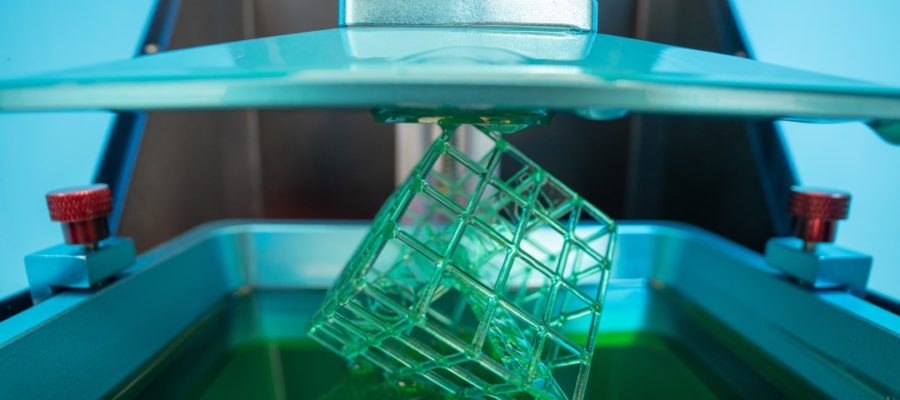Vat photopolymerization is a 3D printing process where a liquid photopolymer, held in a vat, is selectively cured by a process called light-activated polymerization.
Other terms used for vat photopolymerization include stereolithography (SL) or stereolithography apparatus (SLA).
How Vat Photopolymerization Works
Stereolithography was the first practical 3D printing technology. And that makes vat photopolymerization one of the oldest additive manufacturing processes.
- First Liquid Polymer Layer – The first step in the vat photopolymerization (VP) process is the submerging of the build platform into a container of liquid photopolymer, which is a curable resin. The platform is submerged just below the surface of the resin, according to the specified thickness of the layer being printed.
- Light Exposure – The liquid on the surface of the submerged platform is exposed to light that is cast in the pattern required for the layer being printed. The light source can be UV laser, UV light, or digital light processing (DLP), among others.
- Build Platform Moves – Once the layer of resin cures, the build platform moves further into or out of the liquid resin before the light exposure and curing process is repeated.
- Post Processing – Once the part is printed, it is lifted out of the resin tank for post-curing. Any remaining liquid resin can be reused for another print project. The printed part can then be finished manually, which includes removing any support structure, and polishing surfaces and/or painting the part as required.
Advantages of Vat Photopolymerization
- Very High Detail – VP allows for the printing of 3D objects with a very high detail of surface finish.
- High Volumes – VP can be very fast compared to other additive manufacturing processes in terms of volume.
- Scalability – Depending on the requirements, VP can be used with very large containers to create desk-sized 3D objects.
To learn more about stereolithography, check out our article “What is Stereolithography (SLA) 3D Printing?”.
